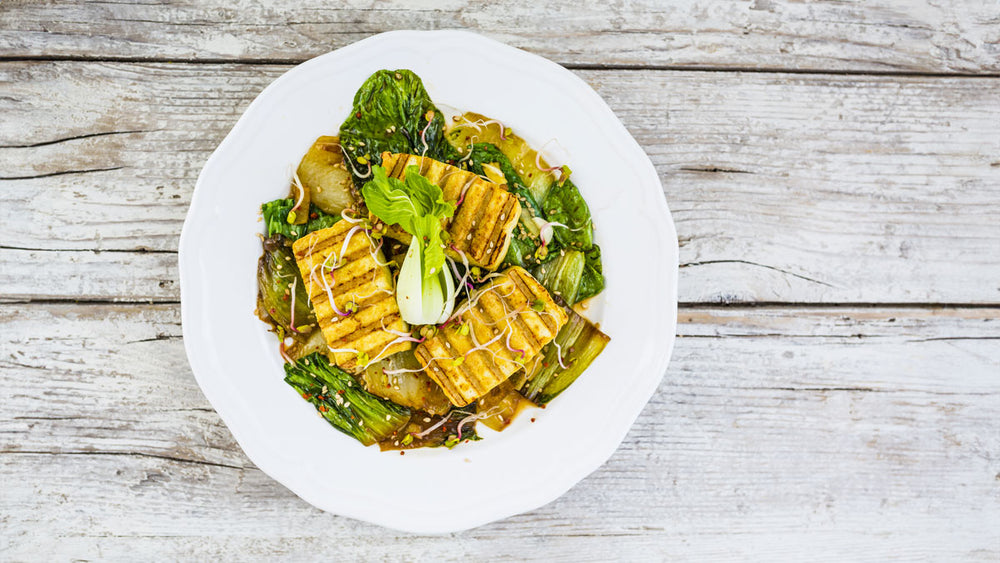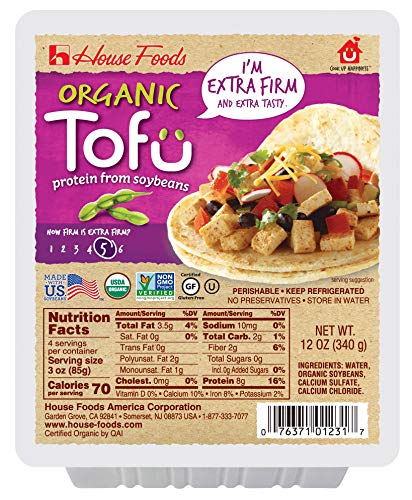The Low FODMAP Approach to a Plant-Based Diet: Managing IBS Symptoms
Do you desire to lean into a plant-based diet but are worried it will get too complicated with your IBS symptoms? I hear you! The good news is that you can be a plant-based eater and follow a Low FODMAP diet to help ease uncomfortable bloating and digestive discomfort at the same time. Let’s get into it.
Understanding FODMAPs and IBS
FODMAP is an acronym that stands for fermentable, oligosaccharide, disaccharides, and polyols. These are a group of fermentable carbohydrates that, in most people, help to keep the gut microbiome thriving and versatile, but in other people, they can cause digestive irritation like abdominal pain or a change in bowel habits. Limiting FODMAP foods can provide relief from the pesky symptoms of IBS for many individuals.
Plant-Based Protein Sources that are Low FODMAP
A plant-based diet, on the other hand, is another diet strategy that can be used to aid in increasing fiber intake and create a flourishing gut microbiome. Unfortunately, some plant sources of protein contain FODMAPs. These include many beans, lentils, quinoa, goat and cow cheese, high-lactose milk, cashews, and pistachios. This does mean that plant-based eaters have to put extra consideration into where they are getting their protein from. But don’t fret! I’ve compiled a list of some of the FODMAP-friendly plant-based protein sources:
- Nuts (walnut, macadamia, peanut, pecan, pine) and <10 almonds or hazelnuts
- Seeds
- Nut butters
- Tofu
- Tempeh
- Pea protein powders
Non-meat animal protein options:
- Lactose-free dairy
- Some cheeses, including cheddar, Colby, gouda, mozzarella, parmesan, and provolone
Balancing Macronutrients with the Plate Method
Knowing which foods have protein is just step one. Now, we have to see how these foods fit within the framework of a healthy diet. Making sure we have a balance of macronutrients and micronutrients is key. As dietitians, we often use the “plate method." The plate method includes ½ plates of fruit and non-starchy vegetables, ¼ plates of carbohydrates, and ¼ plates of protein. A serving of fat, usually about 1 tablespoon, helps round the plate out.
A Day of Plant-Based, Low FODMAP Eating
Let’s take a look at what a day of using this strategy looks like in practice. In case you are trying to increase or decrease fiber intake as a strategy to manage GI symptoms, I have also noted the highest fiber-containing foods on the menu.
Breakfast:
- Lactose-free yogurt (protein + fat)
- Walnuts (fiber and extra protein)
- Blueberries (fiber)
Lunch:
- Rice noodles (carbohydrate)
- Tofu (protein)
- Olive oil for sautéing tofu (fat)
- Zucchini and bok choy mix (fiber)
Snack: Smoothie
- Pineapple (carbohydrate + fiber)
- Spinach (fiber)
- Pea protein powder (protein)
- Soy milk (protein)
Dinner:
- Brown rice (carbohydrate + fiber)
- Tempeh (protein)
- Green beans (fiber)
Tools and Resources for Success
So, how do you know what foods are FODMAP-friendly? Having the right tools and resources at your disposal can help to keep you on track. Before starting any new diet, it can be a great idea to consult with a registered dietitian. Dietitians can help make sure you fully understand the diet you are embarking on, provide meal and recipe ideas, and assist with some additional symptom management. If you’ve never worked with a dietitian before, this website is a great tool to help you find a match in your area.
There are also many apps available for you to have information at your fingertips. There’s a good chance you have heard of the MONASH app, which is a great starting point. Not only does it break foods down into low, moderate, and high FODMAP foods, but it also provides recipe ideas and additional tips. Lastly, Foodguides is a great source of inspiration and information. Check out our FODMAP-friendly recipes like this tasty minestrone soup or quinoa bowl.
Being a plant-based eater has many benefits, from helping reduce chronic disease to environmental impact. My hope is that you feel empowered to follow a plant-based diet while also taking care of your gut health. If that means following a Low FODMAP diet, just know that it is absolutely doable with a little planning and preparation. A more comfortable GI system awaits!
- Academy of Nutrition and Dietetics. (n.d.). Find a nutrition expert. eatright.org.



















Comments
Join The Conversation...